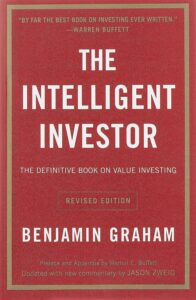Introduction
Corporate finance is a complex, multifaceted subject that deals with the financial decisions and management strategies of corporations. It encompasses a wide range of topics, including capital structure, risk management, and valuation. One of the leading textbooks on the subject is Corporate Finance by Jonathan Berk and Peter DeMarzo.
In this blog post, we will take a closer look at the authors and their influential contributions to the field of corporate finance. We will also provide an overview of the key concepts and theories covered in the book.
About the Authors
Jonathan Berk is a well-known academic in the field of corporate finance, with over 25 years of teaching experience at top universities such as Stanford University and the University of California, Berkeley. He has also served as a visiting professor at the Wharton School of the University of Pennsylvania and the Sloan School of Management at the Massachusetts Institute of Technology.
Peter DeMarzo is an equally accomplished academic and practitioner in the field of corporate finance. He is currently a professor at the Stanford Graduate School of Business and has taught at various other prestigious institutions, including Harvard Business School and MIT Sloan School of Management. He has also worked as a consultant for major investment banks and multinational corporations.
Together, Berk and DeMarzo bring a wealth of knowledge and expertise to the subject of corporate finance, making their textbook a widely used and respected resource in the academic community.
Key Concepts in Corporate Finance
The textbook Corporate Finance by Berk and DeMarzo covers a vast range of topics, starting with the fundamentals of corporate finance and building up to advanced theories and concepts. Some of the key concepts and theories covered in the book include:
– Financial Statements and Cash Flow Analysis: The authors provide a comprehensive examination of financial statements and cash flow analysis, crucial tools for evaluating a company’s financial health and performance.
– Investment Decisions: The book delves into the various techniques of assessing investment opportunities, such as net present value, internal rate of return, and capital budgeting.
– Financing Decisions: The authors explore the different sources of financing available to companies and how to optimize their capital structure.
– Risk and Return: The book discusses the relationship between risk and return and how to manage risk through diversification and hedging strategies.
– Valuation: The authors provide an in-depth analysis of different valuation techniques, including discounted cash flow, relative valuation, and option pricing models.
Apart from these core concepts, the book also covers critical topics such as corporate governance, mergers and acquisitions, and international finance. It also includes real-world examples, case studies, and end-of-chapter problems and exercises to help students apply the concepts they have learned.
Conclusion
In conclusion, Corporate Finance by Jonathan Berk and Peter DeMarzo is a comprehensive and well-written textbook that offers valuable insights into the world of corporate finance. It is a must-read for students, practitioners, and anyone interested in understanding the complexity of financial decision-making in the corporate world. By combining academic rigor with real-world examples, the authors have created a highly informative and practical resource for those seeking a deeper understanding of corporate finance.
